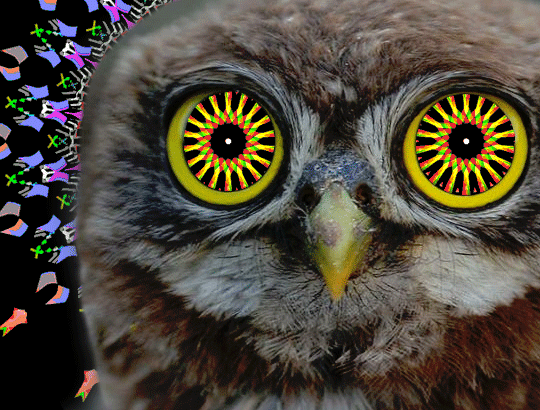Keep in mind I'm paraphrasing this from memory but:
"In my main line of work, we breed fruit flies. We noticed that the some of the more aggressive males would fight over a bit of land, plant, whatever, to court females. We wondered what would happen if we only let the aggressive flies breed, and within 10 generations we had flies that were like Hercules (fruit flies breed very fast which is why they are used to study genetics and evolution). We then reintroduced them back to the more natural population of flies. What ended up happening was; while the aggressive flies were busy fighting, the non-aggressive males were hanging out with the females and making babies. The aggression was quickly bred out and after a couple of generations it went back to initial levels. We often hear the phase 'survival of the fittest' in this field of study, but just a reminder that it doesn't always mean what you think it means."
I thought that was an interesting aside that you might enjoy. ![]()


CW animal harm
I remember that there was a paper looking into historic development of zebra fish as model organism (could've been a poster only). However I didn't find it within half a minute. What I tell you is from long ago, when sequencing was quite expensive and somewhat error prone, which means longer times till you could sequence genes and when CRISPR gene editing wasn't as good as it is now, so I barely remember it.
What I remember is this:
the zebra fish shares quite a few relevant strains of DNA with humans, like 2/3. There are plenty of diseases that develop from genome sources that are exhibit in humans which are exhibited in zebra fish also! Often the very same gene sequences are responsible. This is especially the case for some neuronal (and immune system) questions, which means early brain development as example. This means that with gene editing you can turn genes on and off and with some coloured switched you can turn genes and thus protein expression on and off during Zebra fish development. This means that you can in some cases not only say this gene is relevant for that disease (or just neuronal expression), but you can also say at what time that happens, which allows you to tune in of the type of "defect", be it DNA sequence or protein, or protein folding. This also enables you to find out which kinds of proteins are useful for what development steps in Zebra fish and if the DNA/Protein expression is shared in humans, too!
zebra fish are nearly transparent, this means you can look at stuff well, also toggling stuff with lasers is more easy
zebra fish are reproducing very fast, easy and they are cheap to feed, also they don't need a lot of space, but if your lab got it you can give them quite a bit of space.
their genetic sequence was known and sequenced quite early on, in part cause they were somewhat of a model organism even before their DNA was completely known, so it has been a practice
So I think you have a good point in terms of that it is just a common model organism, which means that research on it is established, easy to reproduce and people got a feeling for what to expect (and especially what is exaggerated). If there would be 100k model organisms for one use case they would lose their function somewhat.
However don't take anything I wrote serious, this is like pretty old, so the pros and cons might have shifted significantly.
Finally: Cuba created a Zebra Fish centre last year and the EU got one, too
Next time I'm infodumping to my wife about fish she might actually hear something I haven't repeated a thousand times. Thank you very much for taking the time to share the history!